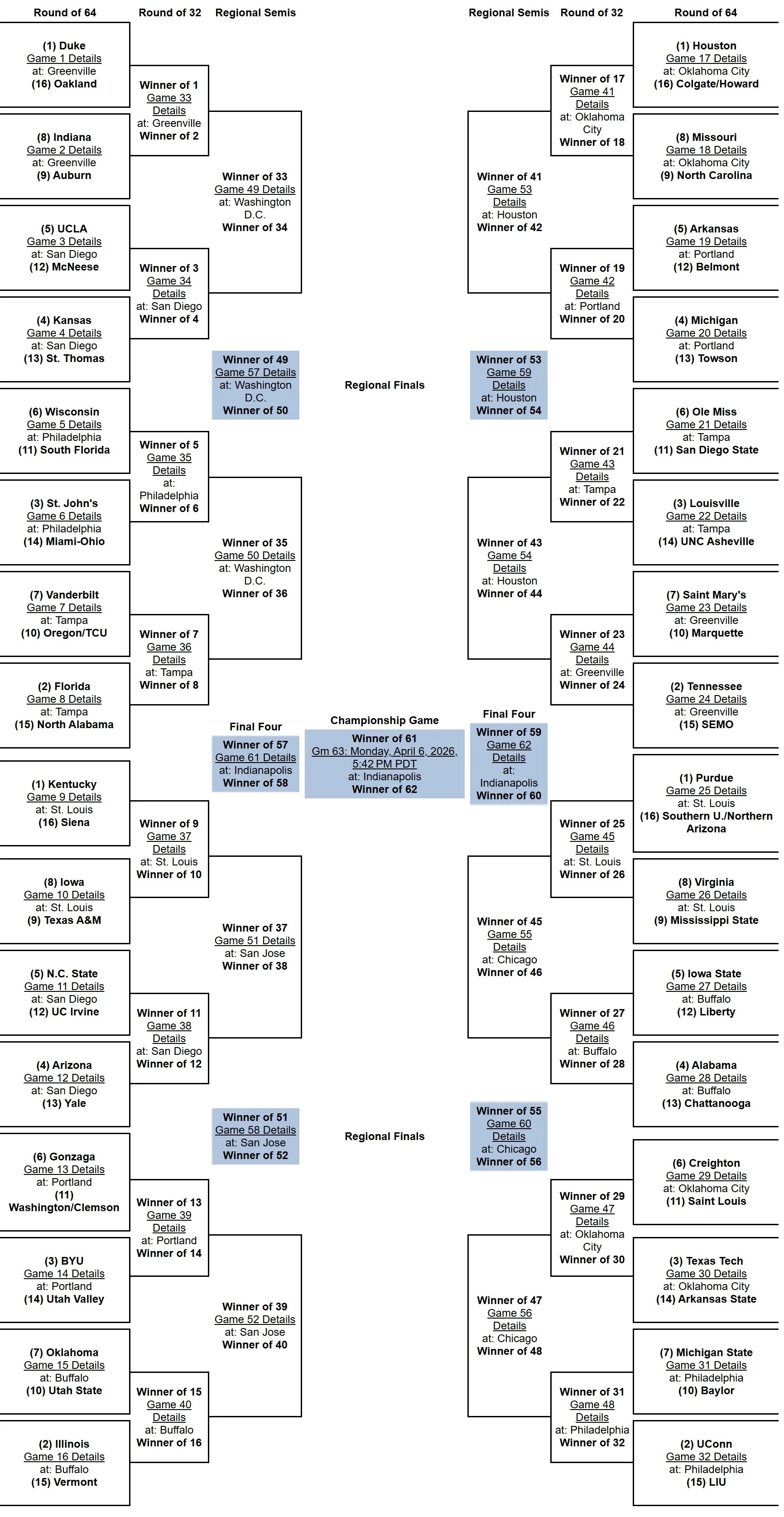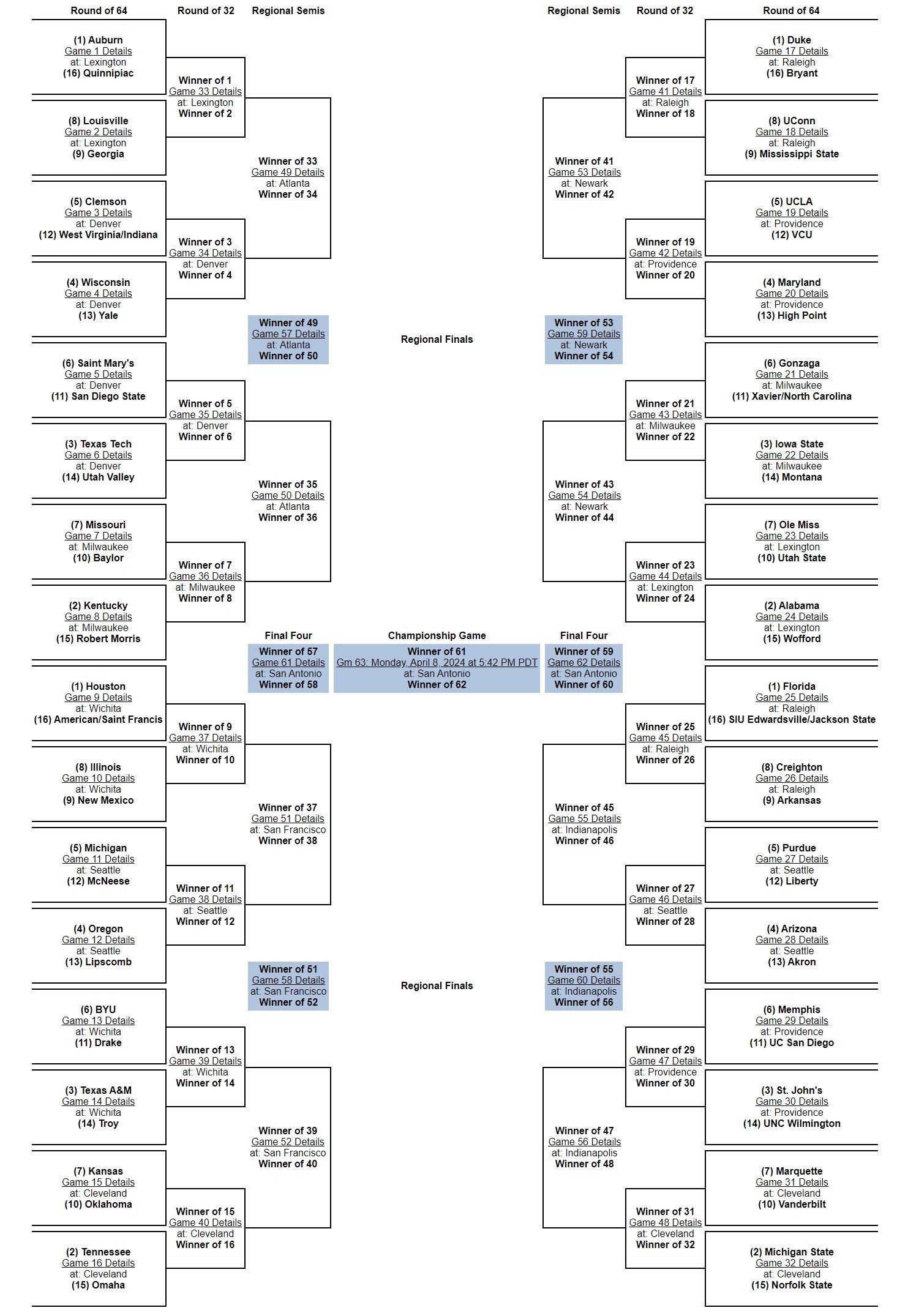The 2025-26 College Basketball season has finally arrived.
A preseason bracket exercise is once again part of the celebratory package of gifts today. The following bracket forecast is based on a number of factors including but not limited to: perceived team strength, perceived coaching strength, roster evaluations, strength of schedule evaluations, and conference tournament locations, including league tournament format.
BRACKET
Bracket projections are based on the 2025-26 NCAA Committee Principles and Selection Process. Projected Conference Champions are based on which team has the inside track to the top seed within its conference tournament.
Forecasted At-Large Bids Stolen: 0: The Annual Average = 2.4 Bids disappear per year during Championship Week.
FIRST FOUR OUT: West Virginia, Boise State, Nebraska, SMU
NEXT TEAMS OUT: Georgetown, San Francisco, USC, Memphis
FOLLOW ME ON TWITTER/X: @RoccoMiller8





